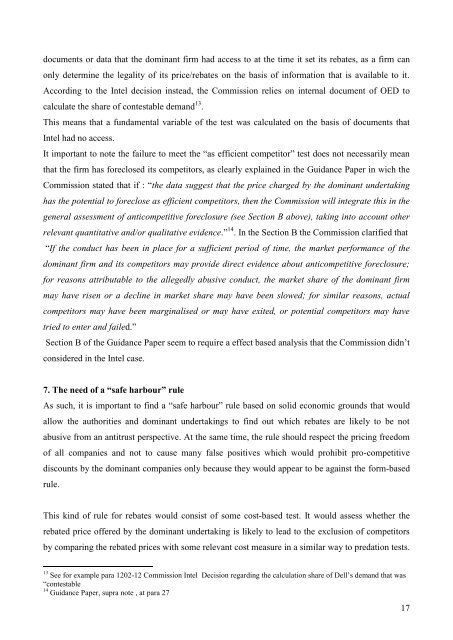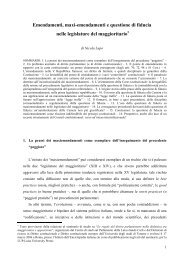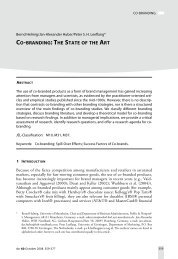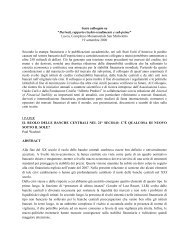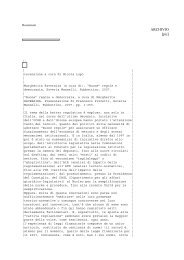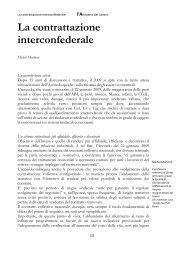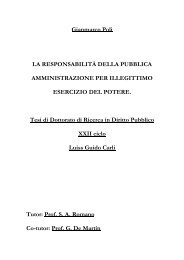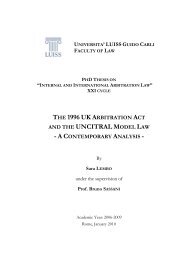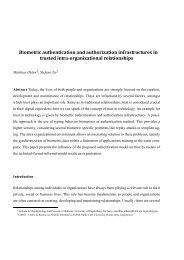The rebates, which consist in granting a lump sum discount to the ...
The rebates, which consist in granting a lump sum discount to the ...
The rebates, which consist in granting a lump sum discount to the ...
Create successful ePaper yourself
Turn your PDF publications into a flip-book with our unique Google optimized e-Paper software.
documents or data that <strong>the</strong> dom<strong>in</strong>ant firm had access <strong>to</strong> at <strong>the</strong> time it set its <strong>rebates</strong>, as a firm canonly determ<strong>in</strong>e <strong>the</strong> legality of its price/<strong>rebates</strong> on <strong>the</strong> basis of <strong>in</strong>formation that is available <strong>to</strong> it.Accord<strong>in</strong>g <strong>to</strong> <strong>the</strong> Intel decision <strong>in</strong>stead, <strong>the</strong> Commission relies on <strong>in</strong>ternal document of OED <strong>to</strong>calculate <strong>the</strong> share of contestable demand 13 .This means that a fundamental variable of <strong>the</strong> test was calculated on <strong>the</strong> basis of documents thatIntel had no access.It important <strong>to</strong> note <strong>the</strong> failure <strong>to</strong> meet <strong>the</strong> “as efficient competi<strong>to</strong>r” test does not necessarily meanthat <strong>the</strong> firm has foreclosed its competi<strong>to</strong>rs, as clearly expla<strong>in</strong>ed <strong>in</strong> <strong>the</strong> Guidance Paper <strong>in</strong> wich <strong>the</strong>Commission stated that if : “<strong>the</strong> data suggest that <strong>the</strong> price charged by <strong>the</strong> dom<strong>in</strong>ant undertak<strong>in</strong>ghas <strong>the</strong> potential <strong>to</strong> foreclose as efficient competi<strong>to</strong>rs, <strong>the</strong>n <strong>the</strong> Commission will <strong>in</strong>tegrate this <strong>in</strong> <strong>the</strong>general assessment of anticompetitive foreclosure (see Section B above), tak<strong>in</strong>g <strong>in</strong><strong>to</strong> account o<strong>the</strong>rrelevant quantitative and/or qualitative evidence.” 14 . In <strong>the</strong> Section B <strong>the</strong> Commission clarified that“If <strong>the</strong> conduct has been <strong>in</strong> place for a sufficient period of time, <strong>the</strong> market performance of <strong>the</strong>dom<strong>in</strong>ant firm and its competi<strong>to</strong>rs may provide direct evidence about anticompetitive foreclosure;for reasons attributable <strong>to</strong> <strong>the</strong> allegedly abusive conduct, <strong>the</strong> market share of <strong>the</strong> dom<strong>in</strong>ant firmmay have risen or a decl<strong>in</strong>e <strong>in</strong> market share may have been slowed; for similar reasons, actualcompeti<strong>to</strong>rs may have been marg<strong>in</strong>alised or may have exited, or potential competi<strong>to</strong>rs may havetried <strong>to</strong> enter and failed.”Section B of <strong>the</strong> Guidance Paper seem <strong>to</strong> require a effect based analysis that <strong>the</strong> Commission didn’tconsidered <strong>in</strong> <strong>the</strong> Intel case.7. <strong>The</strong> need of a “safe harbour” ruleAs such, it is important <strong>to</strong> f<strong>in</strong>d a “safe harbour” rule based on solid economic grounds that wouldallow <strong>the</strong> authorities and dom<strong>in</strong>ant undertak<strong>in</strong>gs <strong>to</strong> f<strong>in</strong>d out <strong>which</strong> <strong>rebates</strong> are likely <strong>to</strong> be notabusive from an antitrust perspective. At <strong>the</strong> same time, <strong>the</strong> rule should respect <strong>the</strong> pric<strong>in</strong>g freedomof all companies and not <strong>to</strong> cause many false positives <strong>which</strong> would prohibit pro-competitive<strong>discount</strong>s by <strong>the</strong> dom<strong>in</strong>ant companies only because <strong>the</strong>y would appear <strong>to</strong> be aga<strong>in</strong>st <strong>the</strong> form-basedrule.This k<strong>in</strong>d of rule for <strong>rebates</strong> would <strong>consist</strong> of some cost-based test. It would assess whe<strong>the</strong>r <strong>the</strong>rebated price offered by <strong>the</strong> dom<strong>in</strong>ant undertak<strong>in</strong>g is likely <strong>to</strong> lead <strong>to</strong> <strong>the</strong> exclusion of competi<strong>to</strong>rsby compar<strong>in</strong>g <strong>the</strong> rebated prices with some relevant cost measure <strong>in</strong> a similar way <strong>to</strong> predation tests.13 See for example para 1202-12 Commission Intel Decision regard<strong>in</strong>g <strong>the</strong> calculation share of Dell’s demand that was“contestable14 Guidance Paper, supra note , at para 2717


